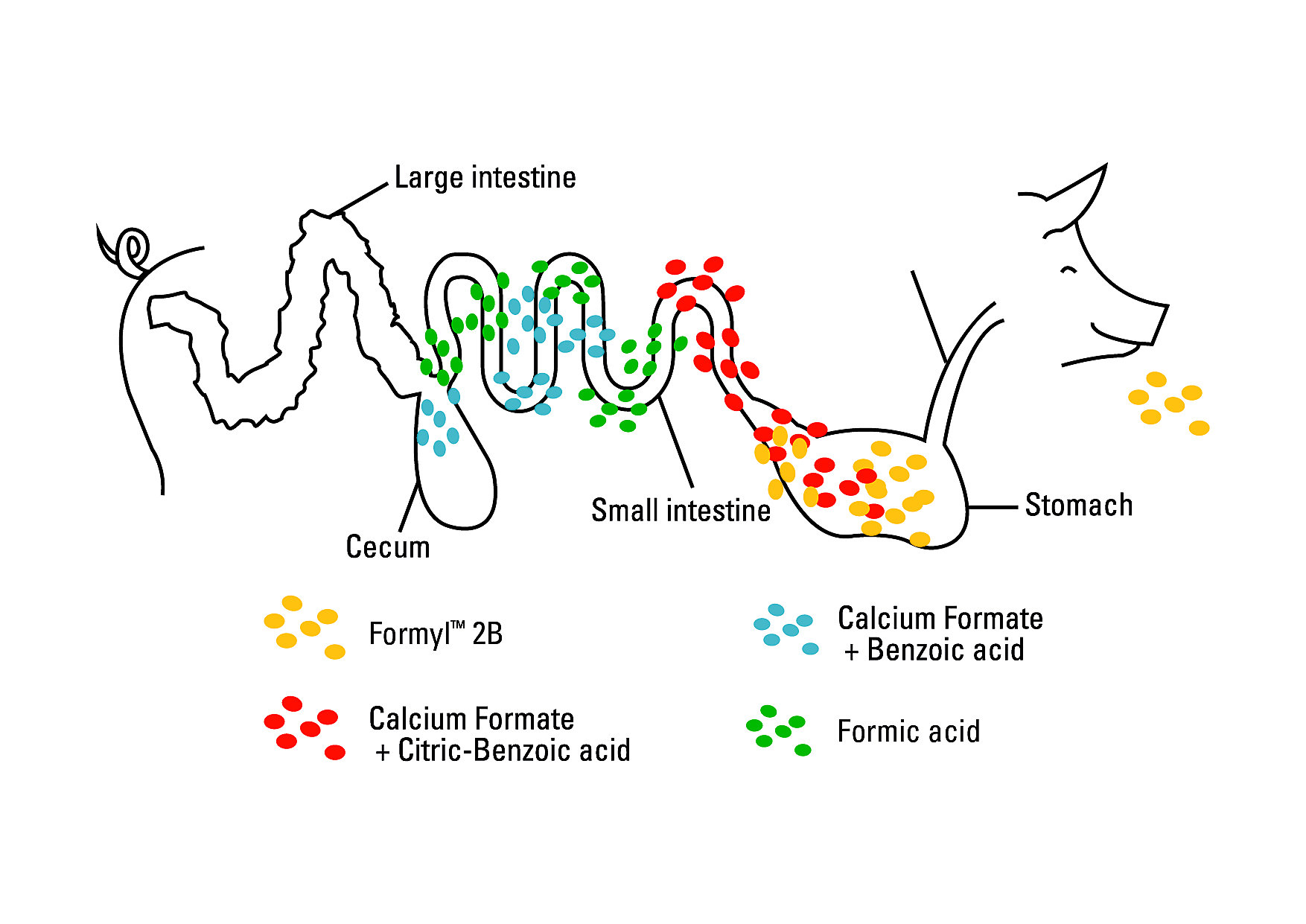You are viewing Sub-Saharan Africa
- United States
- Canada
- Mexico
- South America
- EMENA
- Sub-Saharan Africa
- Russia
- South Asia
- Asia Pacific
- China
- Global
Choose Your Location:
- United States
- Canada
- Mexico
Popular Searches
- Animal Nutrition & Health
- Formyl™ 2B
Formyl™ 2B
Modern animal production can be a challenging industry. Consumer demand is growing exponentially every year, placing farmers under severe pressure to deliver quality produce so much more quickly. The health of production animals, particularly swine and poultry, are affected by this acceleration and the effect this has on the environments they are reared in. Weakened health make swine and poultry, especially piglets, more susceptible to gram-negative bacterial infections leading to economic losses.
Kemin realises the challenges farmers face and have therefore done extensive research and product development to be able to assist the animal production industry with these problems. The answer? A healthy intestinal tract! By developing and managing the intestinal health of production animals, farmers can ensure healthier, stronger animals that reach their optimum genetic potential.
The Role Formyl™ 2B Plays in The Intestinal Health of Piglets
Due to the complexity of the intestinal tract, improving the intestinal health of animals cannot be obtained overnight. Kemin therefore developed a three-geared approach that looks at improving the health of the intestinal tract in a holistic manner:
Each of the above three gears needs the successful development and maintenance of the other two in order to reach an overall successful result.
Enteric gram-negative bacteria such as E.coli live inside the intestinal tract of piglets. Kemin developed Formyl™ 2B to effectively control gram-negative bacteria to assist with the intestinal health of piglets.
Formyl™ 2B is a coated source of Citric, Formic and Benzoic Acid encapsulated by a fluid bed process, resulting in 70% active ingredients. To deliver optimal performance, the encapsulation allows for superior handling ease and slow release into the intestinal tract.
How Formyl™ 2B works
- The organic acids in Formyl™ 2B are encapsulated, this ensures that the organic acids do not inhibit the development of gastric parietal cells in weaning piglets thereby optimising gastric Hydrochloric Acid production.
- It is a source of Calcium with very low ABC (Acid Binding Capacity) versus other sources.
- The Calcium Formate in Formyl™ 2B is coated so as not to bind with any endogenous gastric HCl.
- As soon as the fat matrix is removed, Citric Acid followed by Benzoic Acid react sequentially with Calcium Formate releasing Formic Acid in its undissociated form.
- Undissociated Formic Acid easily penetrates the cell membranes of bacteria, especially gram-negative bacteria (E.coli & Salmonella).
- Formic Acid dissociates inside the cell and releases H+ ions which disrupts enzyme activity in the bacterial cell.
- The bacteria expend energy to try and expel these H+ ions, killing bacteria in the process.
- Formic Acid has been shown to be highly effective at killing gram-negative bacteria such as E.coli & Salmonella.

The Benefits of Formyl™ 2B
- Acidification; inhibits bacterial growth and propagation and promotes enzyme activity
- Enhances antimicrobial activity and digestion
- Controls E.coli and Salmonella
- Improves feed intake, growth performance and piglet uniformity
- Decreases the dietary calcium content to the minimum required
- Improves acid-binding capacity, which leads to improved performance
- California Supply Chain Act
- Email Disclaimer
- GDPR Personal Data Addendum
- General Terms & Conditions for Vendors
- Global Environmental Policy Statement
- Indirect Cost Estimates
- Kemin Terms & Conditions
- Modern Slavery Act Transparency Statement
- Privacy Policy
- Sitemap
- Change Cookie Consent
- Animal Welfare Statement
© Kemin Industries, Inc. and its group of companies all rights reserved. ® ™ Trademarks of Kemin Industries, Inc., USA
Certain statements may not be applicable in all geographical regions. Product labeling and associated claims may differ based upon government requirements.
